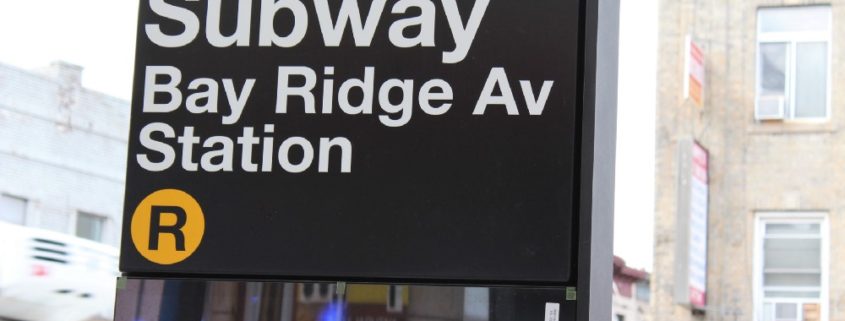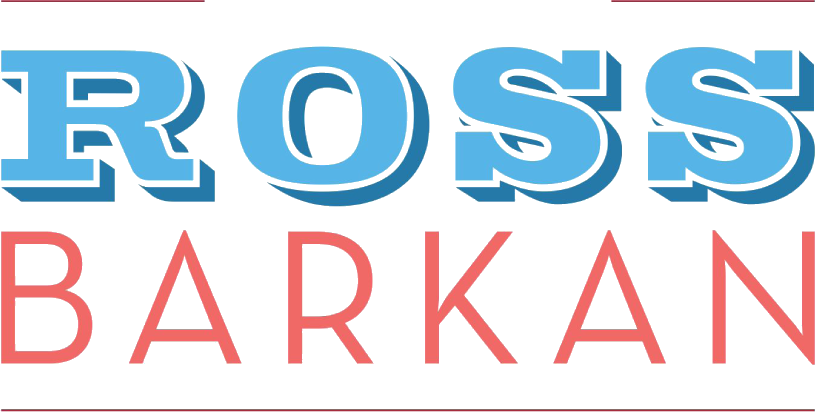
One of the fun things about running for office is proposing solutions for serious problems. As a journalist, I could do this all the time, but it always came down to someone else — an elected official, an empowered bureaucrat, or some other influential person — listening to these ideas and weighing whether they should even consider implementing them. Now, as a State Senate candidate, I can create a platform and campaign on it myself. This is liberating.
Transportation is obviously going to be a centerpiece of this campaign because getting around Southern Brooklyn is such a nightmare. The buses are slow, the trains barely run, and nothing is accessible for people with disabilities. Pedestrians are at the mercy of automobiles. It can take many hours to move just a few miles. My campaign released a video yesterday to illustrate some of that frustration.
I truly believe the failure of our transportation grid poses an existential threat to Brooklyn and the rest of the city. New York is only so exceptional, and if the trains and buses don’t show up, the cost of living can only be justified for so long. Mobility is the lifeblood of this city. Without it, what are we?
I hope other politicians begin to take transportation much more seriously. I know I will. Without further ado, here is my 10-point Transportation Agenda for Southern Brooklyn.
(Marty Golden, are you listening?)
Upgrade Our Dilapidated Subway System Now
We must force the MTA to upgrade the subway’s nearly century-old signaling system so our trains can actually show up when they’re supposed to show up. Breakdowns due to “signal delay” are unacceptable. A vast majority of the MTA’s resources must be geared toward installing a computerized signaling system (CBTC) on every train line in the next decade. CBTC would dramatically expand the system’s capacity without building a single new tunnel or piece of track. At the MTA’s current pace, upgrading the subway system’s entire signal network would take a half century and cost $20 billion. Right now, a vast majority of train lines rely on antiquated “block signaling” to coordinate the movement of trains. Decades of disinvestment and a dysfunctional state government has damaged our economy and ruined the commutes of millions. Only with a laser-like focus on CBTC — prioritizing new signal networks above all else — can we get the modern transportation system we need to keep New York City from backsliding to the bad old days. If stations need to close to end delays as we know them, this is acceptable — as long as rapid shuttle buses replace lost trains and no money is spent on superficial upgrades.
Spend Money the Right Way, Not the Wrong Way
We must push for an official, independent audit of the MTA — a failed bureaucracy — and its profligate spending. Everyone knows that the Second Avenue Subway is the most expensive subway in the world and that the MTA’s costs are unmatched. If money were spent more efficiently and allocated more judiciously, we could have much needed upgrades in service across Brooklyn and the other boroughs. The State Senate, in conjunction with the Assembly, must hold emergency hearings on the state of the subway system, which is something they have refused to do. The sad truth is, no one quite knows why MTA capital costs are out of control. Transit experts free from the meddling of politicians must be empowered to seek solutions. After a comprehensive report is produced, MTA reforms must be implemented immediately. We are living a transportation emergency, and every day spent not reckoning with this hard truth is a day wasted.
A Transformational Train Line
For a lot less money than a few stops on the Upper East Side, we could have a transformative train line that would start right in Bay Ridge. The “Triboro” is a viable transit line that would connect communities in South and Central Brooklyn to Queens and the Bronx because it would run for 24 miles on already existing freight line. Our subway map is outdated because it does not account for how often we travel between the outer boroughs for work and pleasure. It is radial, not circumferential, and is no longer suitable for a 21st century workforce. The Triboro would take a passenger from Bay Ridge through Midwood, Central Brooklyn, Maspeth, Astoria, and the Bronx. A dream of the Regional Plan Association, the Triboro must be made a reality — and it would only cost a little more than one billion dollars, according to expert estimates. There is no reason we can’t think big and pursue this project immediately.
Make Our Transit System More Accessible
It is a travesty that Bay Ridge residents have suffered through months-long shutdowns of train stations for cosmetic, and ultimately meaningless, upgrades. All subway stations in Southern Brooklyn need to be compliant with the Americans With Disabilities Act as soon as possible. Whether it’s the Sheepshead Bay B/Q lacking an elevator or the R line discriminating against our seniors and people with disabilities, the MTA has proven it doesn’t care about a large segment of Brooklynites. Along with signal repair, building elevators must be a top priority, and taken seriously by MTA leadership. The MTA needs a “rapid repair” program for elevators to accelerate this process and ensure that it doesn’t continue to break federal law. In the meantime, we must reform the Access-a-Ride program — increasing reliability and funding — because it fails commuters every day. There must be more data produced on quality of service, a more transparent complaint process, and on-service demand. Riders should not have to book a day in advance and wait for a vehicle that never shows up.
New and Necessary Revenue Streams
MoveNY’s congestion pricing plan is a logical solution for Southern Brooklyn’s transportation woes. It will dramatically lower tolls on the Verrazano Bridge, cut down on pollution, and keep vehicles from clogging Manhattan streets — freeing space for commuter buses we rely on to get to work. In conjunction with placing tolls on the East River bridges, state lawmakers must ensure a lockbox is created for the MTA, so all new revenue is channeled toward transit upgrades and nothing else. Trepidation over imposing new tolls is understandable because politicians have raided the MTA’s funds repeatedly. This is why the lockbox is needed. With this revenue — and the goal of freeing roadways for buses and pedestrians — crucial upgrades to our transportation system can be paid for without taking on staggering debt.
Half-Priced MetroCards for Low-Income New Yorkers
We need to support a millionaire’s tax on everyone in the regions served by the MTA in New York State, not just New York City, and use this revenue to subsidize half-priced MetroCards for low-income New Yorkers. Our transportation system should be accessible to everyone, regardless of income. These taxes would not be onerous, particularly in New York City. Our current RPTT (Real Property Transfer Tax) for residential transactions is 1 percent under $500,000 and 1.425 percent over $500,000, paid by the seller
Adding another one percent for transactions above $2.5 million — above the median home price, even in Manhattan — would yield real revenue that could be dedicated to transit projects. Again, this new revenue must be paired with spending reforms. One cannot exist without the other. An independent, competently-run MTA deserves more cash.
Increase Bus Service Reliability
We know how insufficient our subways are. More bus lines must be converted to Select Bus Service with Traffic Signal Priority (TSP) to fill the glaring gaps. When possible, protected barriers must be installed for buses. Additionally, the MTA must introduce a new card that could allow for all-door boarding on all buses, and not just Select Bus Service lines. This would speed up travel times significantly. The B82, which will be converted to SBS in 2018, is a decent start — but obviously it is not enough, especially as more people travel between the outer boroughs and around Southern Brooklyn. Bus rapid transit is far cheaper than building a new train line from scratch, subsidizing ferries, or throwing down a wasteful streetcar in a flood zone. Buses are ADA-compliant, but they are horribly slow — speeding them up will mitigate the ways the MTA already discriminates against seniors and people with disabilities.
Support Legislation to Protect Students from Dangerous Drivers
We need to back legislation to install speed-enforcement cameras in our school zones in an effort to protect our children from dangerous and speeding drivers. This is something Senator Marty Golden refused to support because he thought slowing down drivers’ commutes by a few minutes was more important than saving the lives of schoolchildren. This hits very close to home for me: a recent study found that 92 percent of drivers were speeding on a weekday afternoon outside of PS/IS 30 on the corner of 4th Ave and Ovington in my home neighborhood of Bay Ridge.
Make it Safe to Walk and Bike in South Brooklyn
We need to make our neighborhoods more adaptable to alternative modes of transportation, including walking and biking. We must push for bike-share expansion, prioritizing dock-less bike shares in an effort to bring a responsible and equitable biking network to Southern Brooklyn. This also means pushing for more Vision Zero Complete Street Re-Designs, which have successfully reduced the number of traffic fatalities and injuries by putting the safety of pedestrians and cyclists ahead of the convenience of drivers. There are far too many pedestrian deaths in Southern Brooklyn, and too many roadways that are perilous for children, seniors, and people with disabilities. “Road diets” (adding wider medians, curb bulbouts, and bike lanes where sensible) are appropriate throughout our neighborhoods, particularly on roads where drivers routinely flout the speed limit. These proposals are not about attacking those who own cars — they are about an equitable sharing of the streetscape.
End Truck Traffic
We must cut down on the absurd amount of truck traffic in Southern Brooklyn. Large trucks are responsible for a tremendous amount of congestion and air pollution and are a safety hazard to pedestrians, bicyclists, and other car drivers. We can review the way we coordinate shipments, in part, by exploring possible toll pricing changes at major crossings depending on the time of day. We can and will find a way to make sure our businesses receive their goods on time while reducing double parking and making South Brooklyn’s streets safer. More frequent night delivery should be considered, though weighed with the noise trucks might generate as residents try to sleep.
https://medium.com/@RossBarkan/my-transportation-plan-3bf24b02c478

